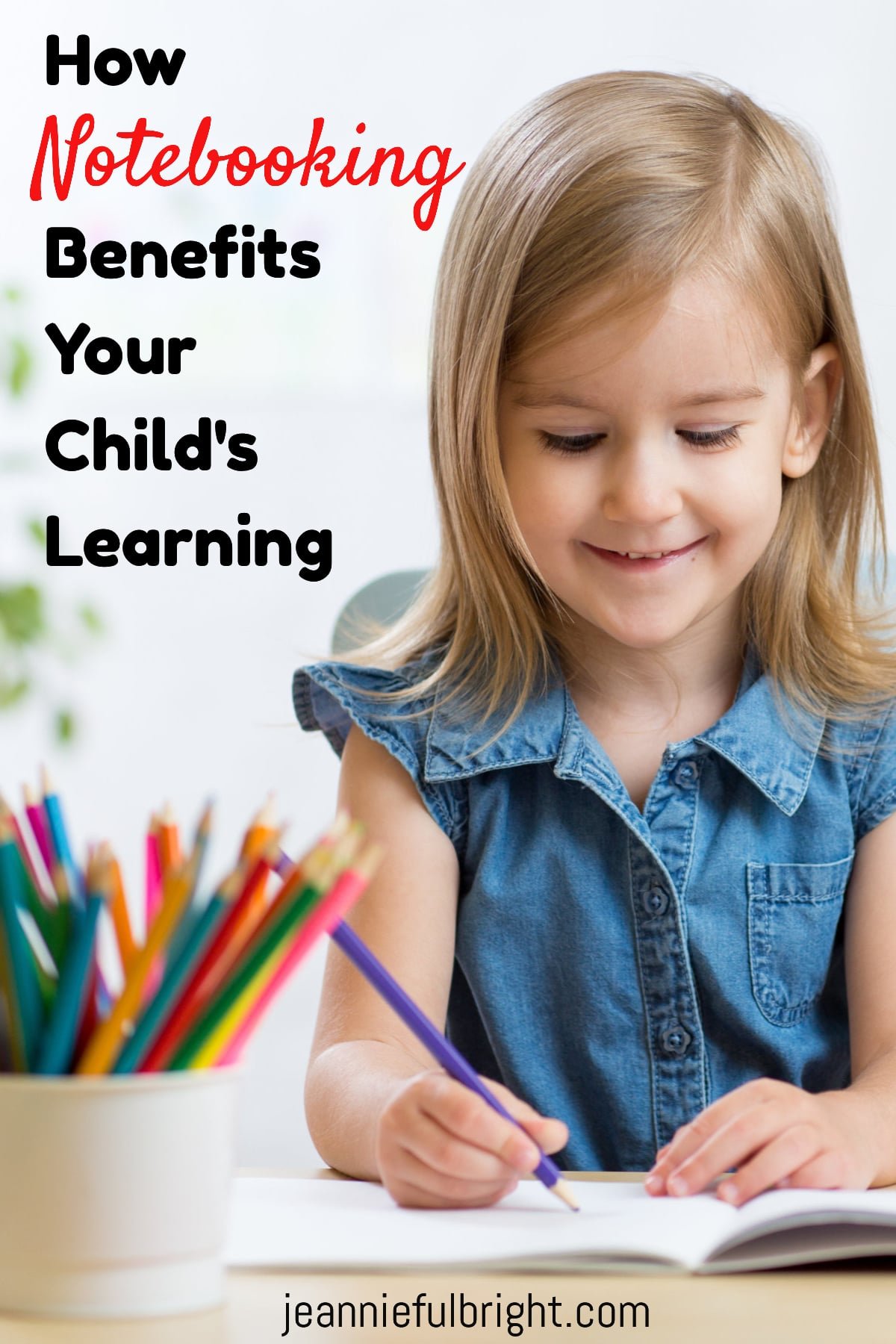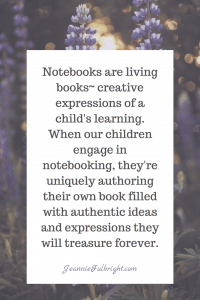How Notebooking Benefits Your Child's Learning
 Early in my homeschool journey I discovered that Charlotte Mason’s methods were the most effective way of educating children. So I knew I wanted to apply her principles to my science books, specifically writing living books that delve deep into the subject matter, as well as using time-tested methods such as notebooking, narration, and hands-on activities to increase learning and retention.Charlotte Mason talks about training attention, or bringing the whole mind to bear. Attention happens when a child’s whole mental force is focused on the subject at hand. How could my books not only engage but sustain a child’s attention at this level?
Early in my homeschool journey I discovered that Charlotte Mason’s methods were the most effective way of educating children. So I knew I wanted to apply her principles to my science books, specifically writing living books that delve deep into the subject matter, as well as using time-tested methods such as notebooking, narration, and hands-on activities to increase learning and retention.Charlotte Mason talks about training attention, or bringing the whole mind to bear. Attention happens when a child’s whole mental force is focused on the subject at hand. How could my books not only engage but sustain a child’s attention at this level?
Through notebooking.
When children are notebooking, they are employing their comprehension, critical thinking, and creativity to create a book of their own learning. The writing and illustrating that notebooking requires give children a stronger understanding of the subject.They are thinking about, mulling over, and remembering what they learned using creativity and a different part of the brain than what is normally used in science. This increases retention, enabling them to remember the material long term.Charlotte Mason talked about the inattentive child and how he can be very wearying for the homeschool mom. She found that notebooking trains the child’s attention span, encouraging him to attend to what he is learning. When children are creating, they are completely focused, moving their learning from short term memory to long term memory.Today’s common methodology used in schools doesn’t give children an actual science education; it merely measures if they read the material. Quizzes and tests focus on the student’s ability to find the right answer in a set amount of time. After the test, the material is gone. The child has not truly learned.
As I reflect on our homeschooling education, I’m struck by the reality that the only things my children remembered were the things they notebooked.
And each time I look back at their notebooks, I see in living color each of my children’s homeschool journey, uniquely reflecting those early years of learning together.You, too, will want to have these special memories from your children’s homeschooling adventure, these living scrapbooks embodying the things you taught them. They will be interesting, beautiful, and will warm your heart. Your children will love looking over them again and again, and as they do, they will be reviewing the material and extending their memory even then!I created the term “notebooking journal” when designing the creative companion products for my science books. The word “journal” reflects the unique expression and personal learning I want each student to achieve through notebooking the topic at hand.I was intentional in selecting the Charlotte Mason methodology to include in the notebooking journals. To see samples of my journals go here. Below are some of the features I've included in each one.Journal and Activity Pages provided after every lesson for the students to record what they learned. They are prompted to fill in Fascinating Facts, with spaces to write and draw as they are reading through the lesson. The children can choose to include what they personally enjoyed learning about.Also included are fun, cool, hands on learning activities that draw out the children’s creativity and help them focus on what they’ve learned, training the children’s attention as they notebook through the lessons. They’re mulling the material over and learning to think. They aren’t just getting information, they are using information and are doing something with it. This furthers the children’s learning as they take their new knowledge with them.I promise you, it works! I’ve seen this with my own children. They continued to grow up and love learning! Notebooking helps our children realize they are free to learn and become anything they want to be!Narration Prompts throughout the lesson to encourage the students to “tell back” what they’ve learned. When the child knows he will be asked to narrate after reading, he will actually be thinking about the topic and how he can recount his learning even as he reads the lesson.Narration not only strengthens the child’s verbal expression and speaking skills, it seals his newfound knowledge of the topic as he “teaches” others all he’s learned.Book Suggestions, Resource Ideas, and Experiments to further the child’s hands on learning and make the lessons funMinibooks the child cuts out and puts together to engage his creativity and learning at a higher levelScripture Copywork selections in print and cursive to strengthen handwriting and engage with God’s WordVocabulary Activities to reinforce important science terms and gain a deeper understanding of the vocabulary related to the topic learnedThere are many other types of notebooking activities your children can engage in and enjoy. Here's a list of ideas to get their creative juices flowing:
- Draw pictures
- Create an advertisement promoting or selling your subject
- Design a “Wanted” poster/page
- Create a brochure
- Write a news article for the paper
- Write a letter to the editor
- Write a newsletter with several articles about your subject
- Create a public service announcement
- Create a comic strip
- Make a storyboard
- Write a story
- Write a play and act it out
- Create an alphabet book or alphabet page
- Make an acrostic
- Make a mnemonic to memorize something
- Make a Venn diagram comparing two things about which you learned
- Diagram and label an image or drawing
- Write a small book (staple the pages together) using paper bags
- Illustrate a small picture book using paper bags
- Draw an image and make it into a puzzle
- Make flashcards (keep in a pocket in notebook)
- Make a cootie catcher
- Draw an outline of the subject and make a maze inside of it
- Make a PowerPoint presentation
- Make a book jacket for a book on the subject
- Create a collage (cut out images or draw them)
- Make a board game or card game based on a game you know
- Illustrate postcards
- Illustrate album covers
- Create a test on the subject and give it to family members
- Write a speech and give it
- Write a song and sing it
- Create puppets
- Make paper people (paper dolls)
- Make graffiti art
- Draw a word or subject title in block letters and draw lots of images or cut out and paste images inside each letter of the word
- Make a timeline
- Make a flowchart
- Make an outline of what you learned
- Draw two pictures of the exact same scene but change a few things in one. Have people find what’s different
One of the awesome things about homeschooling is you are in charge and can do it your way! You know your children better than anyone and get to choose what is the best educational path for them.It’s about bringing the subject to life and making it fun! It’s about your children falling in love with learning by engaging in hands on activities.
It’s about giving your children confidence in their education.
Charlotte Mason’s age-old methods—specifically notebooking—will enable you to homeschool with excellence. They will help you succeed, and most importantly, will help your children succeed. Cherish the time spent with your children. Enjoy learning with them as you help each develop into the person God called them to be.

